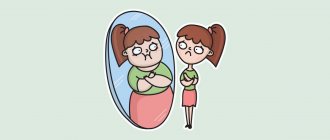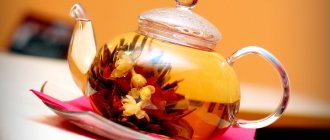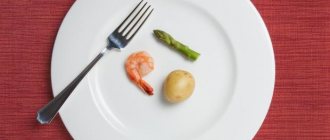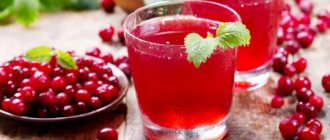Food is an integral part of our daily life. However, everyone’s attitude towards eating is different, this is especially noticeable lately: for some, food becomes a cult; food lovers post dozens of photos of their lunch or dinner, without noticing that they eat much more than their body needs. Others, on the contrary, strive to limit their food consumption to a minimum, emphasizing their independence from food. Proponents of proper nutrition count calories, vegetarians make sure that nothing of animal origin gets into their dishes... In general, food is now a special area of human life that cannot be ignored. Therefore, you should not be surprised at how much of it has become devoted to everything that can affect food intake. For example, color, or more precisely, its effect on appetite. You will learn from the article what color causes appetite in people. So let's get started.
How does appetite appear?
Appetite is a person's desire to eat. It is explained by a simple physiological reaction and is associated with a decrease in blood sugar levels. Chemoreceptors transmit a signal about a lack of glucose to the hypothalamus, then this signal goes to the cerebral cortex, from here thoughts are born that it would be nice to eat. At the same time, the organs of the gastrointestinal tract begin to actively work: salivation increases, gastric juice is produced, so the body prepares for eating. When hunger is satisfied and the blood glucose level is back to normal, the brain also receives a signal: “That’s enough.”
The effect of color on appetite
Many people already know the concept of color therapy. Psychologists use color treatment to combat stress, depression and other nervous disorders. Color can affect your appetite. Thus, researchers have identified colors that induce appetite. They are recommended to be used in the design of dining rooms and kitchens, and to buy dishes in these particular colors. There are also shades with a reverse effect.
You should remember the colors that cause hunger or, conversely, suppress the desire to eat, and take this into account when organizing the space where you usually eat, as well as when preparing dishes.
How to increase interest in food?
Colors that stimulate appetite include warm, bright shades of red, yellow, and orange. Sky blue and turquoise also encourage us to eat something delicious. Perhaps you have even noticed that desserts are often served in turquoise dishes. It turns out that this is no coincidence - it is much more difficult to refuse a cake served on such a plate.
If you suffer from a lack of desire to eat, then remember the main colors that cause appetite. Red, yellow, orange, bright green, and turquoise awaken interest in food. Surround yourself with these shades and it will help solve your eating problem.
How to adjust weight
The psychology of nutrition is a dense forest for many. But thanks to the fact that today information is within the reach of any person, we can actively absorb it. And not doing this is a sin. After all, modern women, when losing weight, do not use all the possibilities of influencing their mind. And sometimes he is the main opponent in the struggle for harmony.
If you know a lot of interesting and useful information about color and how it affects appetite, then you can control your kilograms today.
The influence of color on interest in food
The color scheme in which your kitchen is decorated can stimulate or, on the contrary, dull your appetite. Owners of many restaurants and eateries have long used this fact in their work and marketing to increase profits. Most pizzerias, burger joints and fast food cafes use bright and vibrant colors. For example, red, yellow, orange are colors that stimulate appetite.
It's not just about the interior. There is also a connection between the color of the dishes and appetite. Therefore, it is necessary to change your product space comprehensively.
There is a theory according to which food on plates of a certain color looks more attractive. It seems that you are not full and want a second serving, not because the food is incredibly tasty, but only because of the color of the dishes in which it was served!
A skillful housewife can create the opposite effect: somewhat reduce the volume of products consumed, and at the same time the costs for them.
White dishes - etiquette or a thoughtful move?
Dishes are of great importance for controlling appetite. Its size, shape and, of course, color are important. According to etiquette, it is correct to serve food in white dishes. And although we usually do not classify white as a color that arouses appetite in people, choosing tableware of this color is really advantageous if your goal is to increase the desire to eat. Food looks more impressive against a contrasting background. The dish looks more aesthetically pleasing and, of course, more appetizing.
What color of dishes stimulates appetite?
The abundance of dishes in the modern world is sometimes surprising. It differs in purpose: there are plates for soup, for salad, dessert, in shape: square or figured mugs are no longer new to anyone, there is no need to talk about color variety. But how to choose exactly the one from which it will be most pleasant to eat? What color dishes stimulate your appetite?
A dish served on a bright red plate will be eaten with greater pleasure than food served on a dark green plate. This is because colors that evoke appetite, and we remind you that these are red, orange, yellow and other warm shades, are also relevant when choosing tableware. In addition, it is important to consider the contrast between the dishes and the dish for which they are intended. So, if black does not usually excite the desire to eat, then a black plate, if used correctly, will become an excellent device in your kitchen. For example, white rice on a black background looks much more impressive than on a standard white plate.
Do colors excite your appetite?
Harald Braem is a graphic designer, advertising consultant and creative director of international advertising agencies (including Young & Rubicon, JW Thompson), a member of the expert staff of the Professional Association of German Psychologists BDP. In his book “The Psychology of Color” he answers this question: “Colors are directly involved in the biochemical and physiological processes occurring in our body, we just don’t notice it. They can increase breathing, heart rate, pulse... cause a feeling of cold or warm, awaken thirst or hunger, calm or, conversely, provoke aggression...". In simple words, they are one of the important stimulants of our appetite.
Visiting catering establishments - gourmet restaurants, atmospheric cafes, simple station and market “food stalls”, stocking up on delicacies and banal pasta in giant hypermarkets and small shops, we are accustomed to a variety of interiors, display cases, and packaging. We practically do not pay attention to this multi-colored sea. Meanwhile, savvy marketers treat color palettes as an effective marketing tool.
Kitchen color
And yet, the main color that affects our appetite is the one in which the kitchen or dining room is decorated. The place where we eat food is very important for its perception. If upon entering a room you have a pleasant feeling of warmth and comfort, then most likely you will not refuse to have lunch in this room. As a rule, this feeling appears when we find ourselves in a bright room, the decoration of which uses more warm and bright colors that cause hunger. This applies to the color of walls, furniture, and decorative items.
If the design of your kitchen is made in cold and dark colors, then most likely you will not want to eat in such a room. Making a blue or gray kitchen means guaranteeing yourself to eat much less than usual. A great way to lose weight - ideal for those on a diet.
How does color affect appetite?
The way color tone affects the human conscious and subconscious is most used by food manufacturers. Knowing human characteristics, they specially select the packaging and design of goods so as to attract the attention of buyers.
Information regarding color influence is also necessary for designers who design rooms. These can be home kitchens, interiors of restaurants and cafes, canteens. Different colors are perceived differently and evoke different sensations. This means that the choice of color can increase your appetite or help you lose extra pounds.
The color scheme of warm tones increases appetite. Various shades of the cold series help reduce the need for food and help you eat less.
The effect of food color on health
Design tips
Of course, you shouldn’t, having learned that yellow can increase appetite, use it wherever and whenever possible. Even if your kitchen is not decorated in an appetizing color, using some bright details will definitely help stimulate the desire to eat. They are not striking, but catch the eye. That is, it is not necessary to use all the colors that evoke appetite in the interior. It is enough to focus on one or more objects. Let it be a scarlet tablecloth or a bright green vase with sunflowers, even a yellow clock on the wall will attract attention; drawings, prints or all sorts of little things depicting products that make most people salivate will be especially relevant when decorating a dining room or kitchen flow. If the picture above the table shows a still life with bright juicy fruits: orange peaches, red strawberries, green apples, then requests for more will not keep you waiting.
To increase appetite
You can use bright colors and rich shades, reminiscent of the color of juicy citrus fruits and other fruits.
They will signal to the digestive system that food will soon be consumed.
Every marketer working in the food industry knows about this feature of our body: as soon as you decorate the walls in one of the above colors, the buyer immediately starts shelling out money.
Red color
The most active and powerful color is red, but it must be used with caution.
Yes, it very quickly causes appetite, but at the same time it suppresses and irritates our psyche.
If a person has been in a room for a long time, the walls of which are painted in various shades of red, then he begins to feel depressed and dejected.
For this reason, the color red can most often be found in all kinds of bistros - visitors to these establishments do not stay for long and free up space immediately after finishing a quick snack.
Yellow and orange color
The most appetizing shades are yellow and orange. Experts have proven that such colors help the body to intensively produce gastric juice.
Also, marketers are very well aware that it is not worth decorating the interior of establishments with cold shades, because products under cold lighting seem less tasty and attractive. The color orange must be used.
As for the interior of the kitchen, it is recommended to decorate it in colors such as yellow and its shades. You yourself will soon notice that you begin to experience security, calmness and positivity, and this, in turn, has a positive effect on your well-being and appetite.
About the combination
The combination of colors also matters. When you look at red-green walls you won’t feel like eating, although both of these colors can have a beneficial effect on our appetite. The thing is that these two colors contradict each other, look unaesthetic and cause dissonance in our minds, a person begins to feel psychological discomfort. And in this state, will we really think about a tasty dish?
Therefore, it is not enough to know which color causes appetite. It is important to use shades together correctly and not allow two or more aggressive, bright colors in the same room. In general, you should be careful with bright colors. They can play a cruel joke and, instead of increasing appetite, cause an uncomfortable feeling of pressure. So know when to stop, because not only your eating behavior, but also that of your household members, largely depends on the design of the kitchen or dining room.
Under control: how to use color to influence the feeling of hunger?
Every Hunter Wants to Know Where the Pheasant Sits. Every gourmet strives to understand how the color of dishes and dishes can affect appetite. Today we will decorate our table with different colors and talk about how the food rainbow affects our desire to eat. So, which colors are a red rag for the stomach, and which shades do not provoke increased secretion of gastric juice? Read on to learn how color can control your appetite.
Let's start from the opposite, i.e. with those flowers that dull the feeling of hunger. And let’s finish with those that, on the contrary, whet a wild appetite.
10. Gray is the most unappetizing color for our inner food lover.
During the experiment, the M&Ms company found that the most food left after banquets was on gray plates. Scientists explain this fact by the fact that people unconsciously associate gray color with poor quality, qualifying the product as spoiled: mold, mildew, a rotten side of an apple - all this is gray. Therefore, if you want to lose weight, gray dishes are in a hurry to help you.
9. Black – can suppress appetite at the initial stage.
A common color in restaurant interiors, which, alas, does not enhance appetite, but kills it instantly. The abundance of black color has a gloomy effect on the human psyche, evokes sad thoughts, and in people with claustrophobia it can cause panic attacks. According to statistics, coffee or tea poured into a black mug seems less aromatic and tasty, because the color of the drink and the glassware merges.
8. Brown – causes unpleasant associations.
Rich brown is rarely “worn” by products in nature. Therefore, it does not cause much appetite in humans, but this rule has a slight exception - chocolate, although perhaps it’s all in the smell? After all, melted chocolate does not visually evoke a storm of emotions inside us, but rather, on the contrary, it resembles a processed product and causes disgust.
7. Purple – neutral when feeling hungry, but can inspire new ideas.
There is an opinion that purple food enhances the flight of creative thought; Therefore, if you suddenly feel a lack of inspiration, you need to eat red onion, eggplant or aromatic Isabella grapes. But the effect of purple color on appetite is very mediocre: it does not suppress it, but does not enhance it either.
6. Blue – does not provoke appetite.
The color of peace and tranquility, cloudless skies and uninterrupted ocean, which is perfect for the interior of a bedroom or bathroom. For the kitchen, this is not the best choice. However, this statement is true if you do not want to get rid of excess calories, in which case eating on a blue plate will help control the amount of food you eat.
5. Turquoise – promotes the secretion of gastric juice.
Average in our “color” rating. A mixture of green and blue, better than pure blue, but somewhat worse than saturated green, affects the secretion of gastric juice. Pleasant color that does not irritate our taste buds.
4. Green – hidden under the mask of “always useful”.
For our body, green = healthy, so green food raises the appetite lever with the note “you can eat as much as you want.” And this is true for most foods (lettuce, cucumbers, fresh peas, greens, apples, zucchini), but it is worth remembering the danger when it comes to pistachio pasta, for example, or any other desserts of such a noble color.
3. Yellow – increases salivation.
The color of optimism and smiles. It has a beneficial effect on appetite, increasing the secretion of saliva. Lemon, yellow pepper, turnips, bananas - all products with a joyful color can reduce nervous tension and prevent the onset of blues, which is especially important in the autumn-winter period. In the interior of the kitchen, yellow color needs to be dosed so as not to overload our psyche; small details as interesting accents are the best option.
2. Orange – stimulates appetite.
Its color characteristics are close to yellow, but somewhat less harsh and better perceived by the eye. Stimulates appetite and increases goodwill - the best color for cozy conversations in the evening in the kitchen during the cold season. In addition, orange helps our brain get back to work faster: a glass of bright juice in the morning (orange/carrot, for example) will immediately wake you up and increase productivity.
1. Red – increases appetite significantly.
The color of bread and circuses, tomato juice and gazpacho is the leader in our rating. It increases appetite several times, which is used by many restaurateurs. Provokes increased secretion of saliva and gastric juice. In a word, the color of the victory of the stomach over hunger.
PS White is an absolutely neutral color, thanks to which it forms a contrast with the prepared dish. Due to this, all food in restaurants, served on large white plates, seems much more appetizing and attractive. You need to be more careful with this color, because it can give you a few extra pounds.
Colorful food
Since ancient times, people have used food coloring to make food more attractive in appearance. In ancient times, dishes were colored with the juice of berries and vegetables. Nowadays, in order to give food a bright color, you don’t have to be so clever - the food industry has adopted a variety of dyes, both natural and artificial. The color palette of modern food dyes is very diverse, because brightly colored food looks much more appetizing. Multi-colored dishes are especially popular among children. So, if your child has problems with appetite, try, for example, cooking multi-colored pasta for him instead of plain pasta and evaluate the result. Eating these will be much more interesting for your child.
Of course, colored food attracts not only children, but also adults. Even the simplest dish will look much more impressive if you add a couple of drops of dye to it. This is especially true when preparing a festive table. Without a doubt, your culinary skills will be appreciated an order of magnitude higher if the food you prepare is not only tasty, but also beautiful.
About food coloring. Choose natural
Manufacturers have also adopted this approach. There is no doubt that when choosing the same cake, the hand will reach for a brighter copy. But here you need to focus not only on the bright color that evokes appetite, but on the nature of this or that dye. It is better if it is natural or at least identical to natural, since an allergic reaction may occur to artificial additives, and children are especially susceptible to it. Natural dyes such as curcumin, a yellow-orange dye, will not harm the body and at the same time will color the food in the desired color; alkanine and carnine will give the dish a red tint; green is achieved with the help of chlorophylls; they are extracted from edible plants: spinach, nettles, broccoli . Do not be alarmed if you find carotenes, lycopene, annatto extract, and anthocyanins in the product.
What about in restaurants?
It would be strange if all the listed factors that can arouse the desire to eat were ignored by restaurateurs. In modern cafes, everything is thought out to the smallest detail so that the guest wants to eat as much as possible and so that his meal gives him maximum pleasure, because then he will come back again and again. Whatever the style of the restaurant, its specialization or prestige, there are general rules of organization that all owners try to adhere to. The same applies to the color design of the place. Often in restaurants you can notice the colors that stimulate your appetite. Red napkins, orange curtains, yellow cushions on chairs - all these design solutions are well thought out from the point of view of stimulating the desire to eat. It is also important for restaurateurs that all visitors are happy, because of this they give preference to neutral colors, ones that rarely cause rejection. Caramel beige, peach pink - even the names of these colors sound just as appetizing! If you don’t know how to decorate your dining room, then stop by the nearest restaurant, pay attention to its decor and adopt a couple of design solutions.
Colors that stimulate and reduce appetite. Choosing the shade of the dishes
Our emotional state, and with it our appetite, changes under the influence of many factors. One of them is the color of the products we eat, and the second is the shade of the dishes used to set the table.
Numerous studies show that the color of dishes can both stimulate and suppress appetite. This fact is well known to specialists of two professions: nutritionists and marketers, who use it in their work. The former strive in every possible way to make food less attractive. The task of the latter is to force a person to eat as much as possible. So, what are the colors that stimulate and suppress appetite?
? Let's try to figure this out together.
Choosing the shade of dishes: general trends and features
If we talk about general trends, then everything is quite simple. Bright, rich shades of warm colors create a wonderful mood and, as a result, stimulate the appetite. Cold tones have a calming effect on the psyche and thereby suppress the feeling of hunger.
- Colors that stimulate the appetite
In cases where it is necessary to create a good mood and make the dish especially attractive, it is best to use plates in yellow and orange shades. Studies have shown that these colors have an invigorating effect and stimulate the production of gastric juice. Red has a similar, but more aggressive effect. On the one hand, it stimulates the appetite, and on the other, it acts as a strong irritant. That is why red dishes are perfect for a quick breakfast and are far from the best solution for long feasts. To flowers that excite the appetite
t, we can include shades of green, however, only those that belong exclusively to the warm range.
- Colors that suppress appetite
Among the most “unappetizing” colors is the blue and blue palette. This is explained by several factors. First of all, it has a calming effect on a person’s emotional state. Blue and blue create an aura of serenity and peace, which causes the body's metabolism to slow down. In addition, in nature there are practically no products of blue and cyan colors, so they are not subconsciously associated with food. The gray palette works in a similar way, so dishes of this range should not be used for setting a children's table. For those who adhere to a strict diet, it is best to choose black plates. They reduce the aesthetics of dishes and perfectly suppress appetite. At the same time, do not forget that black color looks very stylish and perfectly complements the interior of a modern kitchen.
Self-hypnosis or physiology?
Why is a person so susceptible to the influence of color? Is this a consequence of stereotypes that have developed in society or is it a given conditioned by physiology? How do colors stimulate appetite? Of course, the majority opinion that some colors are “appetizing” and others are not has weight in determining how a given shade affects one’s own appetite. However, not all so simple.
It turns out that a biological factor also plays a role here. Orange color makes the brain work more actively, which is why a person begins to feel hungry. And red can increase blood pressure, excite the nervous system and, accordingly, cause appetite. It’s not for nothing that scarlet is considered the color of passion and desire. Green color is a shade associated with benefits and health, so what is green is good for the body. Well, yellow is simply the color of joy and optimism.
Choose your favorite colors, because the main thing is that you feel comfortable in your kitchen, regardless of whether you want to increase or decrease your appetite.
Suppressing appetite
Well, it's all about warm colors.
Cold colors, on the contrary, suppress appetite, calming the human psyche. The blue color in the spectrum is located clearly opposite the yellow color and is an appetite suppressant color. Blue plates and blue items in the interior are the best choice for those who would like to eat less. Blue, blue-green colors and cool shades of purple also reduce appetite. Subconsciously, they are not associated with food. Blue plates and blue items in the interior are the best choice for those who would like to eat less. Blue is one of the most depressing colors, so an interior entirely built around its use will be depressing.
Purple, like green and blue, is calming, but it is more of a meditative effect, promoting thought, reflection, it expands consciousness, enhances intuition. Do you know why women often prefer this color? Purple colored foods contain betanidin. This substance helps our body better absorb vitamin E, which is called the female vitamin. Thus, the explanation for the presence of this color in “women’s rooms”, SPA and other establishments with a female clientele is quite logical. Just, gentlemen, marketing specialists, be careful; in men, an excess of this color can cause a state of melancholy and depression.
—— ps Oh yes, screw in a blue light bulb in the refrigerator











